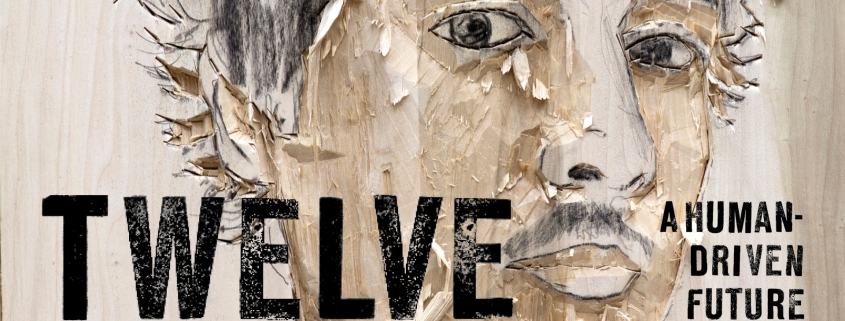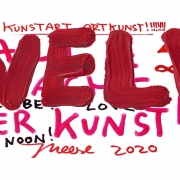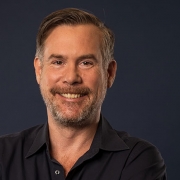- Brave New World: Three countries – three ways into the metaverse - 27. April 2023
- Speed is not an end in itself - 13. April 2023
- The gateway to the hybrid world - 12. July 2022
- So, what is a Client Service Director Asset Production doing? - 20. May 2022
- Our values are kind of guardrail in everyday business life - 11. May 2022
- In the Future, Stores Need to be More Than Just a Place for Transactions - 4. May 2022
- Be True To Yourself Throughout The Brand Experience - 27. April 2022
How do you empower a premium brand for the post-COVID world? And what are the challenges that lie ahead with regard to changing consumer behaviour and preferences? De’Longhi Global CMO Fabrizio Campanella on the right combination of short-term activity and long-term aspects, the art of successful international campaign coordination and the power of emotions.
MATTHIAS BRÜLL: How did De’Longhi manage to navigate through 2020?
FABRIZIO CAMPANELLA: At the beginning it was very important to keep calm. Of course the COVID-19 pandemic required us to take action and change some of the ways we operate, but not to change everything. We always try to keep a long-term perspective, so we decided not to change certain things like our media or marketing investments. Yes, the short-term environment was very challenging, very unpredictable, but we thought both investments were important in the long term. That was our approach in 2020 and it still is in 2021 – to find the right combination of short-term activity and long-term outlook.
Has the fact that people were forced to stay at home had a positive impact on your business?
FC: For many of the categories we are in, the pandemic has had a positive impact because of people spending a lot more time at home. However, this merely accelerated trends that had already emerged prior to COVID. The coffee market was booming before; the coronavirus only accelerated that. We have benefited from the fact that many consumers are used to drinking certain types of coffee specialities that are probably more espresso-oriented when they are out of their homes – but that is not the coffee they drink in their own four walls. At home they might be okay with a simpler, more traditional way of preparing coffee. People not being able to enjoy the out-of-home coffee experience during lockdown is what accelerated the trend for the same kind of coffee at home.
You even increased your marketing investments in 2021. What are the main aspects of this and why?
FC: It’s true that we are increasing our media investment, especially in the second half of the year, but this is a longterm commitment. There are still a lot of countries where we don’t yet have top-of-mind awareness. Not in Germany, of course, but our products are still niche in other countries, so we need to build categories and a loyal consumer base. And it takes time to do that.
You have been working with a global ambassador since the summer. Why is Brad Pitt the right fit for your brand?
FC: If you look at Brad’s awareness, he is the number one across regions from the US to Asia and also across consumer segments. And we were looking for an ambassador who was also strong in terms of their values. I think Brad is a perfect fit for our brand DNA because, like us, he sets great store by quality. He is also very focused on design, which will also become even more important for us in the future.
The campaign with Brad Pitt is your first real global campaign. Why did you wait until 2021?
FC: I think the conditions are right now. We have strong products and the right level of investments and have expanded all markets above a certain threshold, which really allows us to bring them all together on the same communication platform.
Are the markets happy with the campaign and will you stick to that consistency in your communication?
FC: It was relatively easy once the markets were on board. They saw the opportunity with the global ambassador and understood that it wasn’t possible to run this thing independently and that to maximise your opportunity you had to have a coordinated approach. I prefer to talk about coordination rather than centralisation because there’s always a balance. There are things that need to be done and executed locally and decided locally, but in a coordinated framework. We decided to go live on 2 September. That was coordinated. The format of the launch events was somehow consistent, but local markets had the freedom to organise a specific format according to their market reality and business reality. So it’s always a combination of the two. And that’s why I think it’s also the path to take in the future.
Are retail supply chains having an impact for you? Is that posing a problem?
FC: The retail environment has been disrupted in the last few months. So of course there are big swings between one chain or another, online and offline. This was one of the most challenging factors for us: managing the business and adapting to the changing environment. There are some distribution channels that were very relevant in the past but are less relevant today. We have an online explosion in countries like the UK, where 90% of our business is now online. This is a fundamental change to our supply chain because it’s a completely different way of working.
De’Longhi’s brand positioning has been driven by a strong focus on design and technological leadership, the objective of matching people’s needs at home. So people-centricity seems to be a crucial driver of your business. How is that reflected in your organisation and daily work?
FC: Design is important for us, as is technological innovation. We are a company that is very focused on technical improvement, technical innovation and technical excellence in our products. But it is also important – and this is something I am personally pushing – to consider the emotional aspect, which is about consumer-centricity. Yes, consumers need better products from a technology standpoint, but they also need to have a good emotional experience. This is something that now features prominently in our conversations on the marketing side, and the evolution of the product portfolio will also go in that direction.
Is the physical point of sale still the place where you provide your consumer with the full brand experience or have most of them already switched to the digital experience?
FC: Of course the digital experience is becoming fundamental. But I also think that the physical touchpoints will remain important. They will change and the reason for their importance will change too. So these days it is probably less about distribution and more about the experience. But at the end of the day, if you really want to buy a fully automatic coffee or espresso machine for the first time, you need to taste the espresso. That is something you cannot do digitally. Just imagine countries like China: as a market, China is further ahead in terms of digital channels. Everything is digital in China, but if you need to convince the Chinese consumer to buy an espresso machine for the first time, I assume they will need to taste the espresso in the stores first. The whole experience aspect is something that will remain fundamental.
What is your strategy for providing your target audience with the best brand experience?
FC: There are probably three things that are key for me. One is consistency. Be consistent and true to yourself throughout the brand experience. Being relevant is also important – talking to your customers based on what they really need and focusing on the emotional benefits of your brand and your product. So if you’re consistent, if you’re relevant and if you’re warm, you will have all the elements in place to offer the best brand experience.
This article first appeared in TWELVE, Serviceplan Group’s magazine for brands, media and communication. You can read more exciting articles, essays and interviews by and with prominent guest authors and renowned experts in the eighth issue under the central theme “A Human-driven Future: How People Shape the Digital Tomorrow. Click here to access the e-paper.





